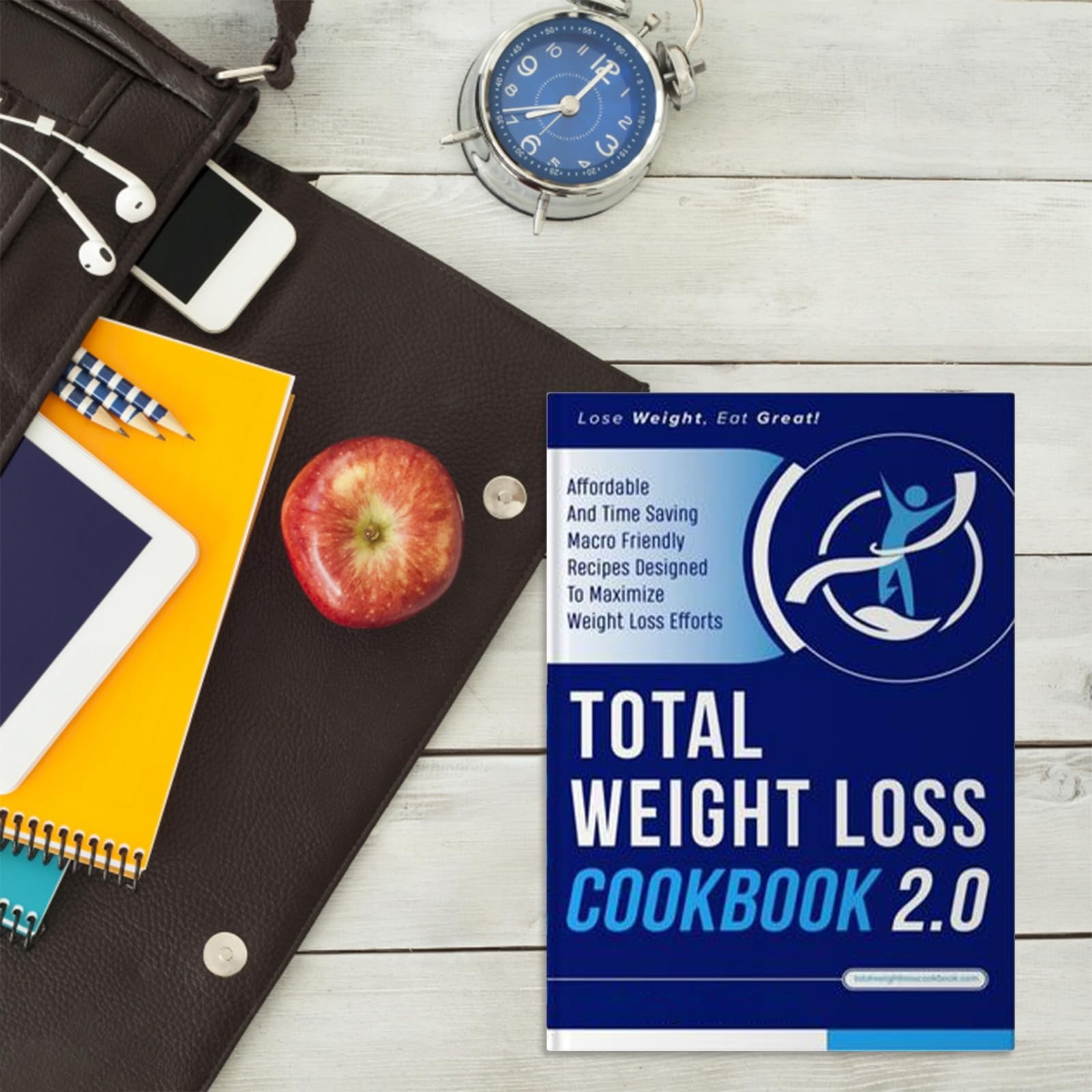“A Comprehensive Guide to a Healthy Weight Loss Plan
Artikel Terkait A Comprehensive Guide to a Healthy Weight Loss Plan
- Complete Guide: Life Insurance Underwriting Process Simplified
- The Future of AI-Driven Diagnostic Devices in Healthcare
- AI Health Care: Revolutionizing Heart Health with AI-Powered Cardiac Monitoring Devices
- The Ultimate Guide to AI's Transformative Impact on Mobile Healthcare Diagnostic Devices
- The Future of Skin Cancer Detection: AI-Empowered Devices
Pengantar
Dalam kesempatan yang istimewa ini, kami dengan gembira akan mengulas topik menarik yang terkait dengan A Comprehensive Guide to a Healthy Weight Loss Plan. Mari kita merajut informasi yang menarik dan memberikan pandangan baru kepada pembaca.
Table of Content
Video tentang A Comprehensive Guide to a Healthy Weight Loss Plan
A Comprehensive Guide to a Healthy Weight Loss Plan

In today’s world, where fast food and sedentary lifestyles are prevalent, maintaining a healthy weight has become a significant challenge for many. While numerous fad diets and quick-fix solutions promise rapid weight loss, they often lead to disappointment and potential health risks. A sustainable and healthy weight loss plan focuses on gradual lifestyle changes, balanced nutrition, and regular physical activity. This comprehensive guide will provide you with the essential information and strategies to embark on a safe and effective weight loss journey.
Understanding Healthy Weight Loss
Healthy weight loss is not about drastic measures or deprivation. It’s about making gradual, sustainable changes to your eating habits and lifestyle that promote long-term well-being. Aim for a weight loss rate of 1-2 pounds per week, which is considered safe and sustainable by most health professionals. This rate allows your body to adjust and prevents the rebound effect often associated with rapid weight loss diets.
Key Components of a Healthy Weight Loss Plan
A successful weight loss plan incorporates several key components:
- Balanced Nutrition: Focus on consuming a variety of nutrient-dense foods from all food groups.
- Calorie Control: Create a moderate calorie deficit by reducing your intake and increasing your activity.
- Regular Physical Activity: Incorporate exercise into your daily routine to burn calories and improve overall health.
- Behavioral Changes: Identify and modify unhealthy habits that contribute to weight gain.
- Adequate Sleep: Prioritize sleep to regulate hormones that control appetite and metabolism.
- Stress Management: Practice stress-reducing techniques to prevent emotional eating and hormonal imbalances.

1. Nutrition: Fueling Your Body for Weight Loss
Nutrition plays a vital role in weight loss. Focus on consuming whole, unprocessed foods that provide essential nutrients and keep you feeling full and satisfied.

- Prioritize Whole Foods: Base your diet on fruits, vegetables, whole grains, lean proteins, and healthy fats. These foods are packed with nutrients and fiber, which help you feel fuller for longer.
- Embrace Fruits and Vegetables: Aim for at least five servings of fruits and vegetables per day. They are low in calories and high in vitamins, minerals, and fiber.
- Choose Whole Grains: Opt for whole grains like brown rice, quinoa, oats, and whole-wheat bread over refined grains like white bread and pasta. Whole grains are rich in fiber, which aids digestion and promotes satiety.
- Lean Protein Sources: Include lean protein sources like chicken breast, fish, beans, lentils, and tofu in your diet. Protein helps preserve muscle mass during weight loss and keeps you feeling full.
- Healthy Fats in Moderation: Incorporate healthy fats from sources like avocados, nuts, seeds, and olive oil. Healthy fats are essential for hormone production and overall health.
- Limit Processed Foods: Minimize your intake of processed foods, sugary drinks, and unhealthy fats. These foods are often high in calories, low in nutrients, and can contribute to weight gain.
- Hydration is Key: Drink plenty of water throughout the day. Water helps you feel full, boosts metabolism, and aids in digestion. Aim for at least 8 glasses of water per day.

2. Calorie Control: Creating a Deficit
To lose weight, you need to create a calorie deficit, meaning you burn more calories than you consume. A moderate calorie deficit of 500-750 calories per day can lead to a weight loss of 1-2 pounds per week.
- Determine Your Calorie Needs: Use an online calculator or consult a registered dietitian to determine your daily calorie needs based on your age, gender, activity level, and weight loss goals.
- Track Your Food Intake: Keep a food journal or use a food tracking app to monitor your calorie intake. This will help you identify areas where you can make adjustments.
- Portion Control: Be mindful of portion sizes. Use smaller plates and bowls to help control your portions.
- Read Food Labels: Pay attention to the nutrition information on food labels. This will help you make informed choices about the foods you eat.
- Avoid Liquid Calories: Limit sugary drinks like soda, juice, and sweetened coffee. These drinks are high in calories and provide little nutritional value.
3. Physical Activity: Burning Calories and Boosting Metabolism
Regular physical activity is essential for weight loss and overall health. Aim for at least 150 minutes of moderate-intensity aerobic exercise or 75 minutes of vigorous-intensity aerobic exercise per week.
- Find Activities You Enjoy: Choose activities that you find enjoyable, such as walking, jogging, swimming, cycling, dancing, or hiking. This will make it easier to stick to your exercise routine.
- Incorporate Strength Training: Include strength training exercises at least twice a week. Strength training helps build muscle mass, which boosts metabolism and helps you burn more calories at rest.
- Increase Daily Activity: Look for opportunities to increase your daily activity levels. Take the stairs instead of the elevator, walk during your lunch break, or park further away from your destination.
- Consistency is Key: Aim for consistency rather than perfection. Even short bursts of activity throughout the day can make a difference.
4. Behavioral Changes: Breaking Unhealthy Habits
Identifying and modifying unhealthy habits is crucial for long-term weight loss success.
- Identify Your Triggers: Pay attention to the situations, emotions, or environments that trigger unhealthy eating habits.
- Develop Coping Strategies: Find healthy ways to cope with stress, boredom, or emotional eating. This could include exercise, meditation, spending time with loved ones, or engaging in hobbies.
- Plan Your Meals: Plan your meals in advance to avoid impulsive eating.
- Eat Mindfully: Pay attention to your hunger and fullness cues. Eat slowly and savor each bite.
- Avoid Distractions: Minimize distractions while eating, such as watching TV or using your phone.
- Seek Support: Enlist the support of friends, family, or a support group. Sharing your goals and challenges with others can help you stay motivated.
5. Adequate Sleep: Regulating Hormones and Appetite
Getting enough sleep is essential for weight loss. Sleep deprivation can disrupt hormones that regulate appetite and metabolism, leading to increased cravings and weight gain.
- Aim for 7-8 Hours of Sleep: Most adults need 7-8 hours of sleep per night.
- Establish a Regular Sleep Schedule: Go to bed and wake up at the same time each day, even on weekends.
- Create a Relaxing Bedtime Routine: Establish a relaxing bedtime routine to help you wind down before sleep. This could include taking a warm bath, reading a book, or listening to calming music.
- Optimize Your Sleep Environment: Make sure your bedroom is dark, quiet, and cool.
- Avoid Caffeine and Alcohol Before Bed: Limit caffeine and alcohol intake in the evening, as they can interfere with sleep.
6. Stress Management: Preventing Emotional Eating
Stress can lead to emotional eating and hormonal imbalances that contribute to weight gain.
- Identify Your Stressors: Identify the sources of stress in your life.
- Practice Stress-Reducing Techniques: Incorporate stress-reducing techniques into your daily routine, such as meditation, yoga, deep breathing exercises, or spending time in nature.
- Seek Support: Talk to a therapist or counselor if you are struggling to manage stress on your own.
- Engage in Hobbies: Engage in activities that you enjoy and that help you relax.
- Set Boundaries: Learn to say no to commitments that add unnecessary stress to your life.
Sample Meal Plan (1600 Calories)
This is just a sample meal plan, and you may need to adjust it based on your individual needs and preferences.
- Breakfast (350 calories): Oatmeal with berries and nuts
- Lunch (450 calories): Grilled chicken salad with mixed greens, vegetables, and a light vinaigrette dressing
- Dinner (500 calories): Baked salmon with roasted vegetables
- Snacks (300 calories): Apple slices with almond butter, Greek yogurt with fruit, or a handful of almonds
Tips for Success
- Set Realistic Goals: Set realistic and achievable weight loss goals.
- Be Patient: Weight loss takes time and effort. Don’t get discouraged if you don’t see results immediately.
- Celebrate Your Successes: Celebrate your successes along the way to stay motivated.
- Don’t Give Up: If you slip up, don’t give up. Get back on track as soon as possible.
- Consult a Professional: Consult a registered dietitian or healthcare provider for personalized guidance.
Conclusion
A healthy weight loss plan is a journey that requires commitment, patience, and a holistic approach. By focusing on balanced nutrition, calorie control, regular physical activity, behavioral changes, adequate sleep, and stress management, you can achieve sustainable weight loss and improve your overall health and well-being. Remember, it’s not about quick fixes or drastic measures, but about making gradual, sustainable lifestyle changes that will benefit you for years to come.

Penutup
Dengan demikian, kami berharap artikel ini telah memberikan wawasan yang berharga tentang A Comprehensive Guide to a Healthy Weight Loss Plan. Kami berharap Anda menemukan artikel ini informatif dan bermanfaat. Sampai jumpa di artikel kami selanjutnya!
